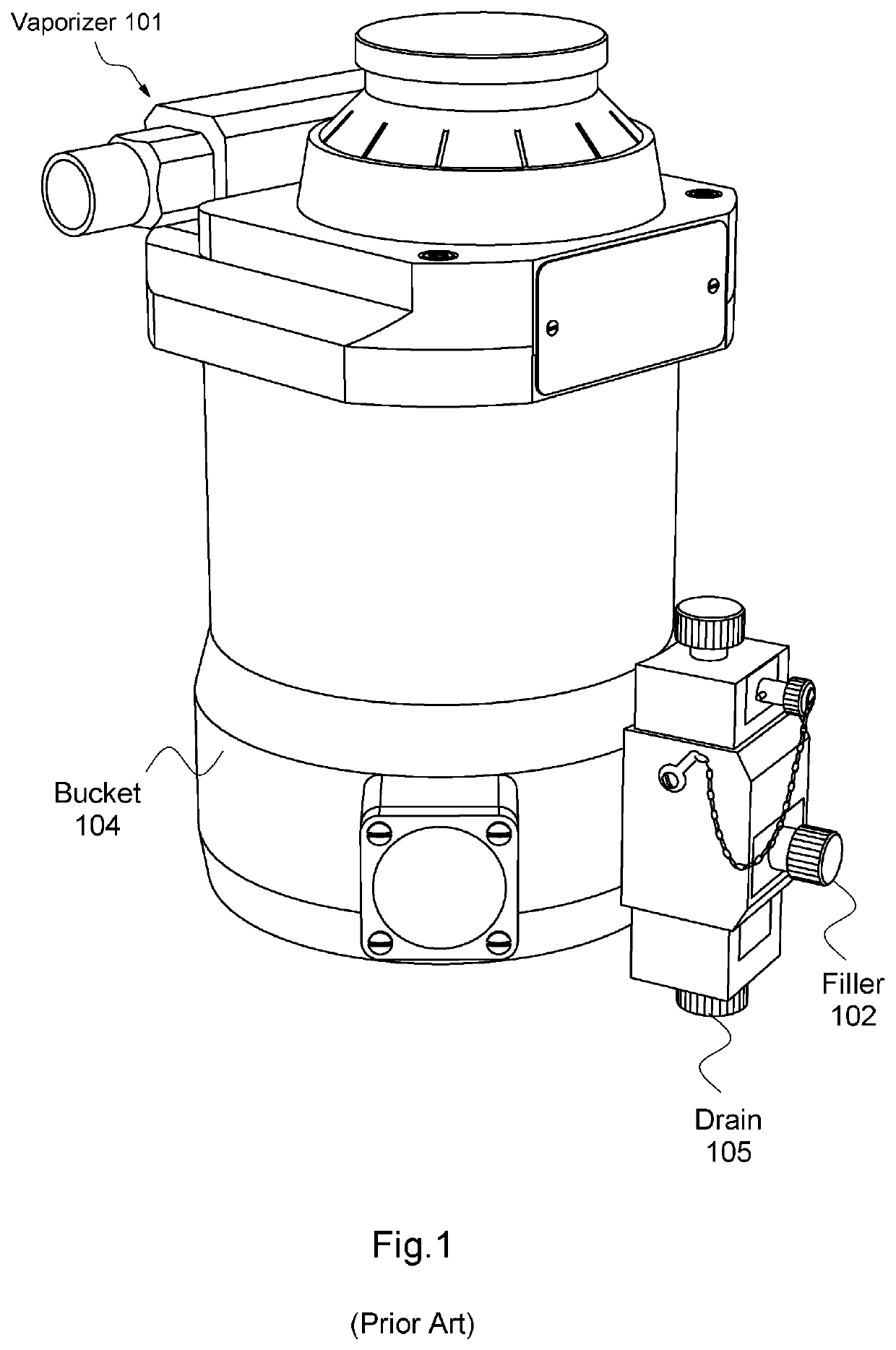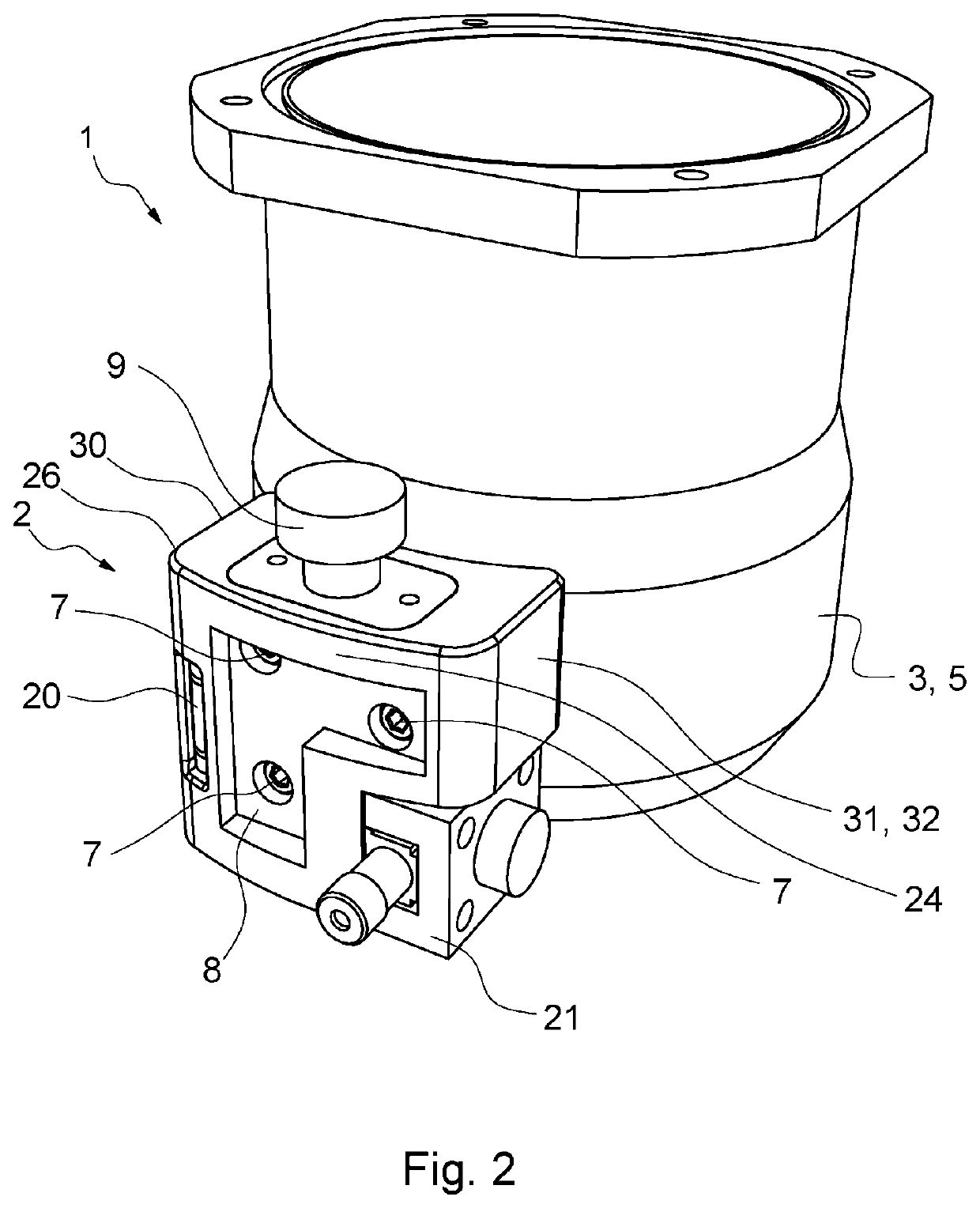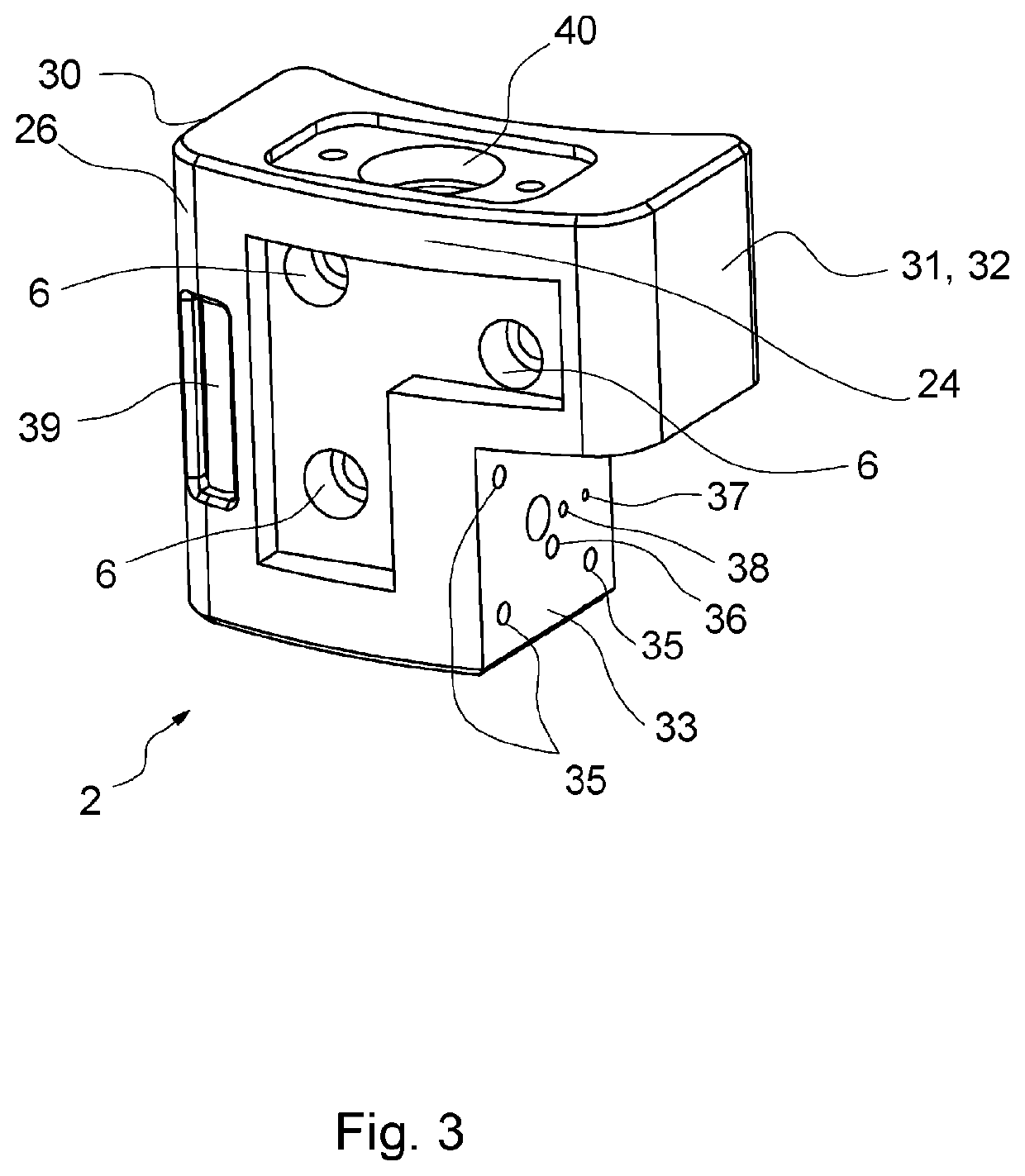Anaesthetic vaporizer filler
a technology of anaesthetic vaporizer and filler, which is applied in the field of anaesthetic vaporizer filler, can solve the problems of large amount of liquid anaesthetic to be vented, delicate process which needed to be improved, and difficulty in filling plenum vaporizers with wrong agents
- Summary
- Abstract
- Description
- Claims
- Application Information
AI Technical Summary
Benefits of technology
Problems solved by technology
Method used
Image
Examples
Embodiment Construction
[0040]FIGS. 2 to 7 depict a first embodiment of a vaporizer 1 and a filler 2 attached thereto. Vaporizer 1 is preferably an anaesthetic vaporizer used with anaesthetic machine for veterinary patients.
[0041]External bucket 3 and the internal reservoir (not shown) disposed therein of vaporizer 1 are made of aluminium that is nickel coated by electroless process for heavy corrosion resistance, and then chrome finished for aesthetic purposes. The nickel coating material delivered by the electroless process is impervious to modem anaesthetics such as halothane and isoflurane and penetrates deeper bores over older conventional plating.
[0042]The body of filler 2 is preferably made of solid brass and nickel coated and chrome finished for aesthetic purposes.
[0043]In manufacture the single block of brass used to manufacture the body of filler 2, can have the various holes / bores machined on an inexpensive three-axis CNC machine. Filler 2 is curved entirely in one plane and has a concave mounti...
PUM
 Login to View More
Login to View More Abstract
Description
Claims
Application Information
 Login to View More
Login to View More - R&D
- Intellectual Property
- Life Sciences
- Materials
- Tech Scout
- Unparalleled Data Quality
- Higher Quality Content
- 60% Fewer Hallucinations
Browse by: Latest US Patents, China's latest patents, Technical Efficacy Thesaurus, Application Domain, Technology Topic, Popular Technical Reports.
© 2025 PatSnap. All rights reserved.Legal|Privacy policy|Modern Slavery Act Transparency Statement|Sitemap|About US| Contact US: help@patsnap.com



